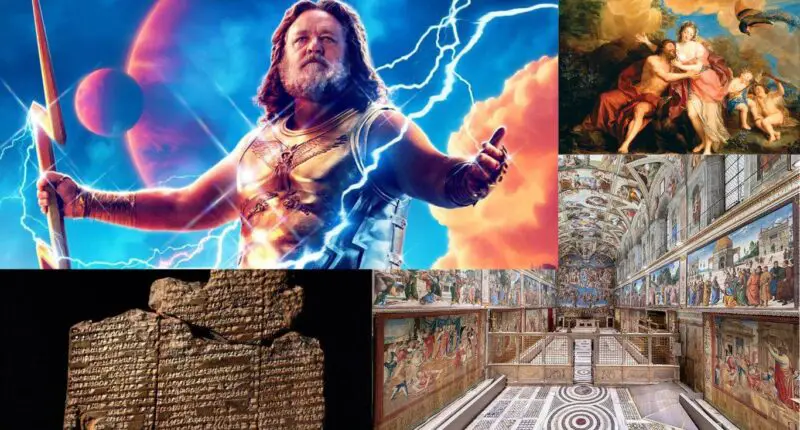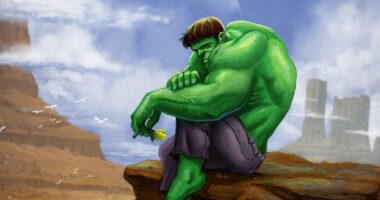How Mythology Has Evolved Over Time: Mythology has long been a vital aspect of human culture, providing understanding and shaping our societies. These timeless stories offer profound insights into the human experience, connecting people across generations. Join us on a captivating journey exploring the evolution of mythology. From ancient oral storytelling to the impact of major world religions, and from the Renaissance revival to its presence in modern pop culture, we’ll uncover the myriad ways mythology has adapted to our ever-changing cultural landscape. By examining the development of these enduring tales, we can appreciate the power of myth and its lasting significance in our contemporary world.
Early Mythology

The Role of Oral Tradition
Storytelling as a means of preserving culture and history: Before the advent of written language, myths and stories were orally shared and passed down through generations, playing a critical role in preserving early societies’ history, culture, and beliefs. Storytelling enabled ancient people to exchange experiences, wisdom, and values, fostering a sense of shared identity and continuity over time. Oral storytelling also ensured that myths remained dynamic and adaptable, reflecting the evolving needs and circumstances of communities. As stories were retold, they adapted to address shifting social, political, and environmental contexts, maintaining their relevance and resonance for listeners.
Ancient Civilizations and Their Mythologies
- Mesopotamian mythology: Mesopotamia, considered the cradle of civilization, was home to various early cultures, including the Sumerians, Akkadians, Babylonians, and Assyrians.
- Egyptian mythology: Ancient Egyptian mythology featured a complex pantheon of gods and goddesses, each with unique attributes and responsibilities.
- Greek mythology: Greek mythology is famous for its elaborate tales of gods, heroes, and monsters. These stories explored themes such as love, betrayal, honor, and vengeance, serving to impart moral lessons, celebrate heroic feats, and explain natural phenomena.
- Roman mythology: Roman mythology, heavily influenced by Greek mythology, adapted and incorporated many Greek deities and stories.
- Norse mythology: Originating from the Nordic and Germanic peoples of Northern Europe, Norse mythology is characterized by its tales of gods, heroes, and supernatural creatures.
Functions of Early Mythology
- Explaining natural phenomena: In the absence of scientific knowledge, ancient people turned to myths to make sense of the world around them. Myths served as explanations for natural events such as storms, earthquakes, eclipses, and the changing of the seasons.
- Establishing cultural identity: Myths helped to define the unique identity of a culture by recounting the deeds of gods, heroes, and ancestors. These stories emphasized the values, beliefs, and ideals that set a particular society apart from others.
- Imparting moral values: Many myths served as cautionary tales or allegories, teaching moral lessons and guiding the behavior of individuals within a society. Through these stories, people learned about the consequences of their actions and the importance of adhering to cultural norms and values.
The Impact of Religions on Mythology

Emergence of Major World Religions
- Judaism: One of the oldest monotheistic religions, Judaism has its own rich mythology, including tales of the creation, the lives of patriarchs and matriarchs, and the history of the Israelites.
- Christianity: Drawing on Jewish mythology, Christianity developed its own set of myths, such as the nativity, crucifixion, and resurrection of Jesus, which have influenced Western culture significantly.
- Islam: Islam, another Abrahamic religion, shares many myths with Judaism and Christianity but also has its own unique stories, such as the Prophet Muhammad’s Night Journey and Ascension.
- Hinduism: Hinduism’s complex mythology features a vast array of gods and goddesses, epics like the Mahabharata and Ramayana, and numerous legends that have shaped the beliefs and practices of Hinduism.
- Buddhism: Buddhist mythology consists of the life story of the Buddha and various tales from the Jataka stories, which recount the Buddha’s previous lives and offer moral lessons.
The Syncretism between Mythology and Religion
- Assimilation of pre-existing myths: As new religions emerged, they often assimilated pre-existing myths from the cultures they encountered. By integrating these stories, religions were able to create a sense of continuity and appeal to a broader audience.
- Creation of new myths: Religions also generated new myths to help explain their unique beliefs and practices, further differentiating themselves from other faiths.
The Decline of Pagan Mythologies
- The rise of monotheism: The emergence of monotheistic religions, such as Judaism, Christianity, and Islam, contributed to the decline of pagan mythologies, as these new faiths emphasized the worship of a single deity and rejected the existence of multiple gods.
- Persecution and suppression of pagan beliefs: As monotheistic religions gained prominence, they often sought to suppress or eliminate pagan beliefs, leading to a decline in the influence and popularity of pagan mythologies.
The Renaissance and the Revival of Mythology

Rediscovery of Classical Antiquity
- Revival of interest in Greek and Roman culture: During the Renaissance, there was a renewed interest in the art, literature, and philosophy of ancient Greece and Rome. Scholars and artists studied classical texts and artifacts, which led to a revival of Greek and Roman mythology.
- Humanism and the celebration of human achievements: The Renaissance humanist movement placed emphasis on the potential and achievements of humanity, and classical myths provided a rich source of inspiration, featuring heroes and gods who embodied human virtues and desires.
Influence on Art and Literature
- Mythological themes in visual arts: Renaissance artists, such as Botticelli, Michelangelo, and Raphael, frequently used mythological subjects in their paintings and sculptures. These works often explored themes of love, beauty, power, and human nature, using gods and heroes as allegorical figures.
- Mythology in literature and poetry: Writers and poets of the Renaissance, like Dante, Petrarch, and Boccaccio, drew upon classical myths to create complex allegories and rich narratives that mirrored human experiences. The works of these authors contributed to the widespread popularity of mythological themes in literature.
The Spread of Mythology Beyond Europe
- European exploration and colonization: As European powers explored and colonized new lands, they brought with them their cultural heritage, including classical mythology. This spread of myths led to the incorporation of mythological themes into the art, literature, and beliefs of societies around the world.
- Syncretism and the blending of mythologies: In some cases, the encounter between European and indigenous mythologies resulted in a blending of stories and beliefs, creating new, hybrid myths that combined elements from different cultural traditions.
Modern Mythology and Pop Culture

The Persistence of Mythological Themes
- Universal human experiences: Mythological themes continue to endure in modern times because they address universal human experiences, such as love, heroism, struggle, and transformation. These timeless narratives resonate with contemporary audiences, reflecting shared emotions and aspirations.
- Adaptation and reinterpretation: Modern storytellers often adapt and reinterpret mythological stories, giving them a fresh perspective and making them relevant to contemporary issues and concerns. This process ensures that myths remain dynamic and engaging for new generations.
Mythology in Modern Literature
- Fantasy fiction: Fantasy fiction, a popular literary genre, frequently draws upon mythological elements and archetypes. Authors like J.R.R. Tolkien, C.S. Lewis, and J.K. Rowling have created immersive worlds with their own mythologies, often inspired by ancient myths and legends.
- Reimagining of classical myths: Contemporary authors, such as Madeline Miller and Rick Riordan, have reimagined classical myths, retelling them from different perspectives or placing them in modern settings. These works breathe new life into age-old stories while introducing them to new audiences.
Mythology in Film and Television
- Blockbuster movies: Mythological themes have found a prominent place in the film industry, with blockbuster movies like the Marvel Cinematic Universe and the DC Extended Universe drawing inspiration from ancient myths and legends, as well as creating their own pantheon of gods and heroes.
- Television series: TV shows, such as “Game of Thrones” and “American Gods,” incorporate mythological elements, exploring themes like power, destiny, and the supernatural. These series often adapt or blend mythologies from different cultures, creating engaging and complex narratives.
Mythology in Video Games and Comics
- Video games: Popular video games like “God of War,” “Assassin’s Creed,” and “The Legend of Zelda” integrate mythological elements into their narratives and world-building.
- Comics and graphic novels: Comics and graphic novels have long been a medium for exploring mythological themes, with characters like Thor, Wonder Woman, and Sandman drawing inspiration from various mythological traditions.
Conclusion
Mythology has been an integral part of human history and culture, evolving and adapting to meet the changing needs of societies throughout the ages. From its roots in oral tradition and ancient civilizations to its resurgence during the Renaissance, and finally, its continued presence and influence in modern pop culture, mythology has demonstrated its enduring power and appeal. By understanding the fascinating evolution of mythology, we can appreciate its ongoing relevance and the valuable lessons it offers, reminding us of our shared humanity and the universal experiences that bind us together.
Also Read: Love and Lust in Mythology



